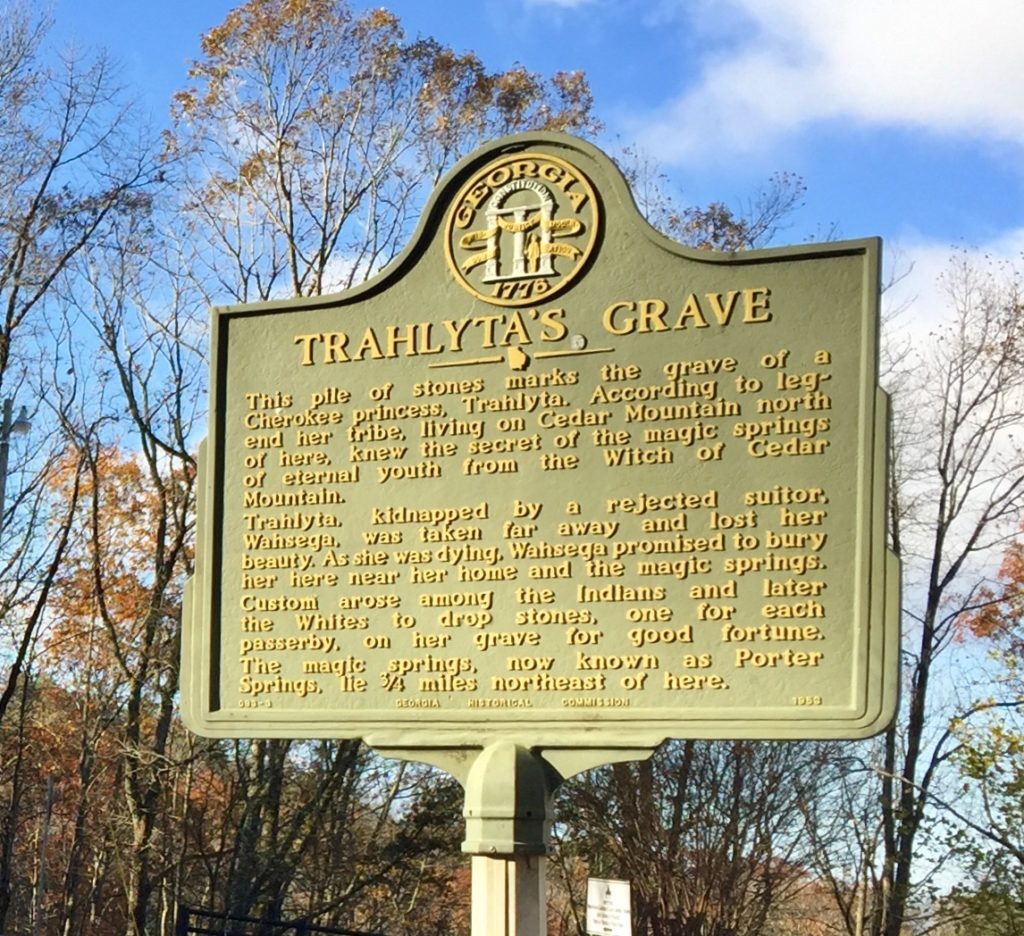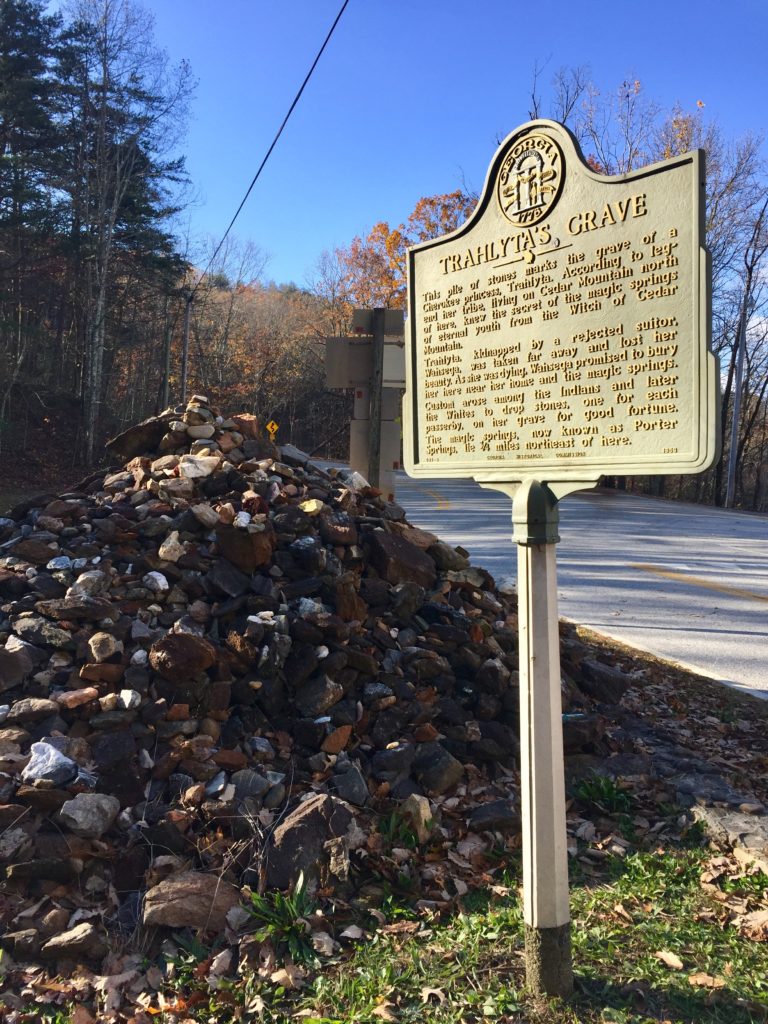
This week’s #MarkerMonday explores the legend of Trahlyta and the history of the “magic springs” in Lumpkin County as related on the historical marker. According to lore, Trahlyta is known as a Cherokee “princess” who drank from the magic springs every day, gifting her with eternal youth and beauty, making her the object of many suitors whom she rejected. One rejected suitor, Wahsega, kidnapped Trahlyta and took her far away from the spring. Without the magic water, Trahlyta began to lose her youth and beauty. Wahsega promised to bring her back to her magic spring as she was dying, and upon her death buried her nearby. The grave is said to be covered in a pile of stones, where people still drop a stone for good fortune.
The magic springs, now known as Porter Springs, were found by Rev. Joseph McKee in 1868. He discovered a wall of rocks placed around the spring and covered in overgrowth, leading him to believe he was not the first to find the spring. The origin of the legend of Trahlyta is unknown, however, upon finding the spring, McKee recalled a story he was once told of Trahlyta and the magical waters. The story sparked public interest and Basil Porter, the owner of the land surrounding the spring, allowed McKee to bring people to Porter Springs to soak-in its healing properties. The land was later leased and developed into a spa destination by Georgia’s District Attorney, Col. Henry P. Farrow.

According to a cultural resources survey by Edwards-Pitman Environmental, Inc., there is no known tribal affiliations between Eastern Native American Tribal legends and the legend of Trahlyta and there appears to be no evidence of the stone “grave” existing prior to early white settlement. However, the Legend of Trahlyta’s eternal youth and beauty brought many visitors to the springs in the late nineteenth century when natural forms of rejuvenation and healing were popular. Another popular theme of the time was romanticizing Native American traditions. After the Cherokee were forcibly removed from Georgia, white settlers sought to find connections to the remnants of Native traditions and landmarks. Soaking in the spring and dropping a stone on Trahlyta’s grave allowed visitors to have a Native American “experience.”
Explore the links below to learn more:
'Ghost Town' health resort in Lumpkin County drew crowds. Gainesville Times
Uncovering Trahlyta: Examining Textual Manifestations of Dahlonega's Cherokee Indian Princess a Theses by Allison Pine
